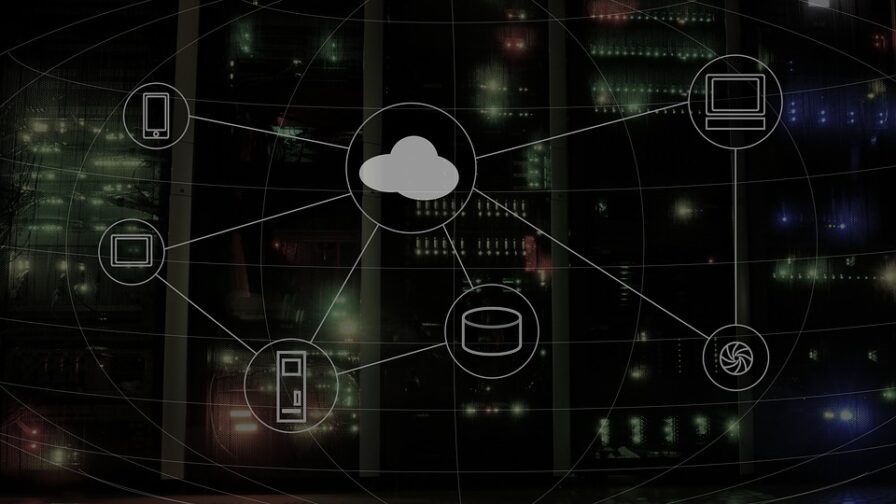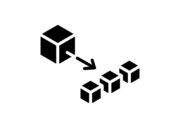
- What is Cloud migration?
- 1. Profitability and cost-effectiveness
- 2. Scalability
- 3. Flexibility
- 4. Security
- 5. Productivity
- 1. Get the best protection from your service provider
- 2. How does the Cloud provider demonstrate that they are compliant with the GDPR
- 3. Enquire about legally-binding data protection documents
- 4. Sole risk managers
- Types of Infrastructure
- Conclusion
What is Cloud migration?
Cloud migration is the process of moving an organisation’s data, applications, and other business elements to a cloud computing environment. The concept of Cloud migration is similar to a physical relocation, but in this case what is being moved are the data and applications for a company or business. Cloud migration requires thorough preparation in advance – this is discussed in detail later in this piece.
Servers, networking equipment, applications, databases, and other business-critical software or hardware are all part of an organisation’s infrastructure. A company’s business processes may be slowed by legacy infrastructures, such as ageing servers or physical firewall appliances. These may also lead to increased security risks as the original vendors cease to support, or release security patches for, their products.
The majority of legacy infrastructure is found on-premises, which means it is physically located in the buildings or on the property where the organisation operates. Many businesses have an on-premises data centre in the same building as their employees, for example.
Although the process might be hectic and has many demands that must be in place both before and after the transfer, Cloud migration is worth the effort. In a computing era, the combination of hardware and softwares is considered a legacy solution – it is a thing of the past. Organisations that are dependent on legacy systems risk being left behind in productivity and innovation.
What should companies consider when moving to the Cloud? There is no one specific structure that will be the perfect fit for all companies when they ditch legacy data centres. No process works for every company. The Cloud migration process has become a fundamental step for many companies that want to embrace a complete digital transformation strategy. Drawing on the benefits of moving all or part of their workloads to the Cloud, organisations can take advantage of modern, high-performance infrastructure that reduces infrastructure deployment and decommissioning costs compared to on-premise solutions. An overview of costs, which experience an overall reduction, and the promise of increased profit margins means that resources can often quickly be made available.
Cloud adoption allows organisations to ensure compliance with data protection regulations (GDPR), improve business continuity, and opens up the possibility of embracing a Green IT strategy. To provide reliable service in telesales management, our company has adopted an approach based on specific patterns in order to generate reliable, scalable and secure applications in the Cloud.
What are the benefits of migrating to a Cloud infrastructure?
The Cloud migration process is all about a combination of people, skills and resources. This is a must-have set for institutions looking to scale and move up the ladder of technological adaptation, but it brings with it some crucial benefits and skill set requirements. The benefits of Cloud migration include:
1. Profitability and cost-effectiveness
Companies that migrate to the Cloud always experience a record cost reduction in running IT operations. Most of the money that would have been spent on upgrades and maintenance can now be redirected, as Cloud service providers will work on system upgrades and maintenance. Most Cloud migration services offered are run on pay-per-user terms. Cloud migration results in significant savings for organisations, as they pay only for what they need and have no additional expenses. The resources available to the organisation can increase or decrease as need arises.
2. Scalability
Operations in the Cloud provide vast room for expansion and support many users and an even more significant workload. Compared with legacy infrastructure, when every addition to the team means extra software-hardware has to be purchased, if a company migrates to the Cloud, resources can be automatically scaled to meet demand.
3. Flexibility
When an organisation adopts Cloud migration for its data and applications, it has embraced an easily accessible resource, and an open working environment for its clients and team. This provides an advantage to employees if any changes need to be made as they can access their respective Cloud portals from anywhere, unlike on-site infrastructure. The company can enjoy the privilege and freedom of scaling up its business anywhere in the world.
4. Security
Cloud infrastructures also provide more control over data. Most Cloud providers allow direct access to RDP-style applications that allow full control over a user’s Cloud resources. This means that total control can be maintained over security practices to meet the organisation’s needs. Cloud migration can help businesses improve performance while lowering security risks.
5. Productivity
Cloud service providers take away the burden of always keeping up to date with infrastructure updates. Teams can now focus on getting more tasks done.
How does the Cloud help with GDPR policies?
The General Data Protection Regulation (GDPR) requires that all businesses ensure personal and customer data is protected at all stages of data processing. This requirement has become more complex as more companies adopt and use Cloud-based communication and collaboration tools.
Choosing Cloud-based services that help firms both meet their needs and remain on top of maintaining GDPR compliance is quite difficult. When it comes to selecting a service provider, organisations should consider a variety of technological and legal factors. Here is a summary of the most important points to remember:
1. Get the best protection from your service provider
For ultimate security, ensure that encryption keys are handled on the client side. Look for services that are encrypted from beginning to end. Check to see if the service provider uses industry-standard encryption algorithms such as AES-256.
2. How does the Cloud provider demonstrate that they are compliant with the GDPR
Inquire about the company’s current data protection policies. HIPAA and ISO are among the information security certifications you should look out for. Check whether any third-party information security audits have been performed.
3. Enquire about legally-binding data protection documents
The GDPR unifies data protection regulations across all EU member states to give EU citizens more control over the privacy of their data. In the event of a security breach, the Cloud service providers need to ensure that no data (for both clients and employees) are stored in the Cloud.
4. Sole risk managers
Third-party risk management must include Cloud service providers. A Data Protection Impact Assessment (DPIA) and a security assessment can be used to determine any risks that may arise when using a Cloud service provider.
Deploying Apps and scaling in the cloud: things to consider
If you do decide to deploy your software on the Cloud, you have three main alternatives to consider, namely IaaS, SaaS, and PaaS. Your decision will be based on your application’s specific criteria.
Types of Infrastructure
a) Infrastructure As A Service Deployment (IaaS)
Here, the infrastructure for Cloud-based apps is provided in its totality. No matter who the supplier is, this is the most fundamental of Cloud services.
The operating system – normally Linux but Windows is also used in some situations – and virtual machine will be provided by the service provider. The catch is that you’ll have to install the application runtimes, libraries, and databases required by the program you are running.
b) Platform As A Service Deployment (PaaS)
PaaS provides a working environment in which developers can create applications without creating the infrastructure that the app runs on. Databases, development tools, and libraries are provided in this scenario. All the user needs to do is install the data and start deploying apps. The provider manages this environment completely, on a regular basis.
c) Software As A Service Deployment (SaaS)
Software as a Service offers a software solution in which everything is in the Cloud. Developers are limited in what they can do with the software’s code since it’s provided by the service provider. SaaS is not the option to go for if the goal is to deploy a custom-made application.
The Essence of design patterns in Cloud deployment
Intending to solve a problem in the computing world, Cloud development maintains a keen focus on methods that can be used to fix or debug errors without interrupting the running of systems or applications. Here are a few of the ways Cloud developers use to tackle this issue:
d) Fallback
Following a disaster – or a scheduled maintenance event – a fallback operation is the process of returning production to its original position. Alternatively, a fallback is the process of transferring production to a backup facility in a process known as a failover operation. In this case the site always acts as a recovery site.
e) Wait and Retry
If an error occurs during operation, the wait and retry strategy helps by defining the maximum number of times that the operation can be tried in order to troubleshoot the problem. Microsoft explains that, although the number of retries is defined, that doesn’t mean the process can’t be run separately. After a number of unsuccessful retries the code stops.
f) Circuit breaker
The Circuit Breaker pattern was designed to ensure that Cloud applications keep working even if one part has a service outage. Through a ‘health monitor’, the Circuit Breaker framework continuously analyses communications between services and delivers quality of service analysis on each circuit.
Conclusion
Cloud computing is a new technology that promises a lot of advantages in the arena of digital transformation. Tech giants such as Microsoft, Google, Cisco, and IBM are investing heavily in this field, and the day is not far off when the Cloud will be used as standard, with security and privacy concerns consequently addressed. The various types of Cloud service available in Europe have been highlighted in this article.
Developers based in Italy should check out Aste Giudiziarie Inlinea S.p.A, providers of a quality management system that complies with UNI EN ISO 9001:2015 and UNI CEI EN ISO/IEC 27001:2017 in the following areas: promotion and advertising of judicial sales through the design and management of its own dedicated portals, provision of telematic sales services, and computerization of documents for public bodies. Aste Giudiziarie Inlinea S.p.A. is a pioneer and market leader in the field of legal auction advertising and on-line judicial auction services in Italy.
Aste Giudiziarie Inlinea S.p.A offers a good solution for Italian developers seeking advice, mentoring, and new opportunities in the Italian and European market.




